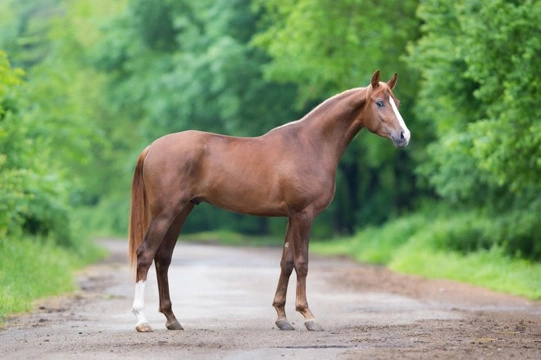Pets
Pets for studWanted petsBreedersAccessories & services
Knowledge hub
Support
Support & safety portal
How to Assess the Conformation of a Horse
Horse lovers are always keen to assess their mount's conformation which is particularly true when they are thinking about buying a new horse. However, it's important to know what to look for and what good conformation actually entails.
When buying a horse, having them vetted is essential especially if you are planning to compete with them in any of the equestrian disciplines. A vet would take into account a horse's conformation when they carry out their vetting and many insurance companies stipulate this be done if you are hoping to have your horse fully covered.
Every Horse is Different
The thing to bear in mind that each and every horse is slightly different and that some of the best horses in the world compete at a very high level very successfully even though they have certain conformation faults. The only real time a near perfect conformation would be of tremendous help is if you are planning to show the horse.
But with this said, if you are just buying a horse so you can hack them out, although their conformation is important, it is not something that needs to be 100% perfect. Horses with a nice conformation will naturally be well balanced and much more so than a horse that is not. The other thing is that a horse with good conformation is less likely to go lame due to the extra strain that may be put on certain parts of their legs and bodies.
Things to Consider When Looking at a Horse's Conformation
Below are the points on a horse that need to be considered when assessing their conformation:
The Head
A horse's head needs to be in proportion to the rest of their body. If it's too big, then it will add a little extra weight to the forehand which is naturally already carrying around 60 percent of a horse's total weight. This upsets their natural balance. If a horse's head is on the small side the reverse is true.
Eyes
A horse should have large eyes with a kind look to them. It's thought that small eyes where a lot of white is shown is an indication that a horse might have a bit of a mean streak in them, although this is not always true.
Nose
Nice, wide and large nostrils are always a good feature because it means a horse can maximise the amount of air they breath in which is a real plus when they are being put through their paces and doing strenuous exercise.
Neck
The speed a horse can move is directly linked to the length of their necks so a horse with a nice long neck will be able to go faster than one that boasts a shorter and stockier neck.
Shoulders
The rule of thumb is that a horse's shoulders should sit at an angle of anything between 40 to 50% from the point of their shoulder to the point of their withers. The reason this is preferred is that it allows for a horse to take much longer and more fluid strides.
Legs
A horse's forelegs need to be straight and strong having gently sloping pasterns. Their hind legs should have a curve in them and when a line is held at the point of their buttocks to the floor, this should touch their hock before running along their cannon bone to the ground.
Hooves
A horse's front hooves need to be well rounded and they need to match. Their hind hooves need to be an oval shape and all four feet need to be facing the front and not at any slight angles,
Backs
A horse's back should rise gently to their croup and be well muscled because this is where all their power comes from. A back that's too long could be cause for concern and so is one that is too hollow or sway backed. If there is more depth in a horse's girth, it means there is that much more area for a horse's lungs to expand which is important when they are being put through their paces during strenuous exercise.
Hind quarters
The hind quarters of a horse are in fact, their engines which means they need to be well muscled and strong. Their croup should also be at the same height as that of their withers without too much of a slope in between.
Assessing a Well-balanced Horse
Apart from taking a close look at a horse's conformation, it is also very important to see how they move and how well balanced they are. This entails not only trotting them up, but to ride them under saddle too. Trotting a horse up will show soundness and to a certain degree it will show how well balanced they are, but it is only under saddle that you will really get to see and feel how well balanced they truly are.
Conclusion
Assessing a horse's conformation is essential, but it's important to bear in mind that there are exceptions to just about every rule. Some of the top Olympic horses don't boast the best conformation and yet they compete at the highest level. But with this said, a horse's conformation is still one of the best indications of how well put together they are and of their athletic ability. Knowing what to look for in a horse is a skill that's well worth the effort of learning because it's a valuable tool that comes in useful when you're thinking about buying a horse.



